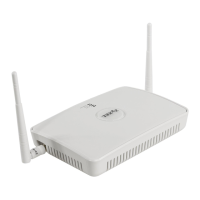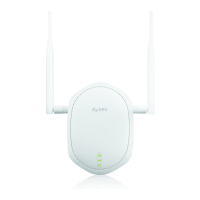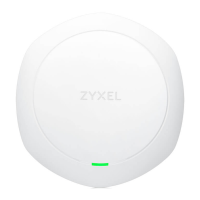Chapter 6 Monitor
NWA3000-N Series User’s Guide
81
6.5 Radio List
Use this screen to view statistics for the device’s wireless radio transmitters when it is in standalone
mode or the radios in each of the APs connected to the device when it is in controller mode. To
access this screen, click Monitor > W ireless > AP I nform ation > Radio List.
Figure 25 Monitor > Wireless > AP Information > Radio List (Controller Mode)
The following table describes the labels in this screen.
Table 25 Monitor > Wireless > AP Information > Radio List
LABEL DESCRIPTION
More
Information
Click this to view additional information about the selected radio’s wireless traffic
and station count. Information spans a 24 hour period.
# When the device is in controller mode, this is the radio’s index number in this list.
Status When the device is in standalone mode, this displays whether or not the WLAN
interface is activated.
Loading This indicates the AP’s load balance status.
AP Description This displays the description of the AP to which the radio belongs.
Model This displays the model of the AP to which the radio belongs.
MAC Address This displays the MAC address of the radio.
Radio This indicates the radio number on the AP to which it belongs.
OP Mode This indicates the radio’s operating mode. Operating modes are AP (access point)
or MON (monitor).
Profile This indicates the profile name to which the radio belongs.
Frequency Band This indicates the wireless frequency band currently being used by the radio.
Channel ID This indicates the radio’s channel ID.
Station When the device is in standalone mode, this displays the number of wireless
clients connected to the device.
Rx PKT This displays the total number of packets received by the radio.
Tx PKT This displays the total number of packets transm itted by the radio.
Rx FCS Error
Count
This indicates the number of received packet errors accrued by the radio.
Tx Retry Count This indicates the number of times the radio has attempted to re-transmit
packets.

